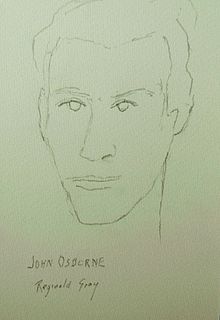Cecil Antonio Richardson was an English theatre and film director and producer whose career spanned five decades. In 1964, he won the Academy Award for Best Director for the film Tom Jones.
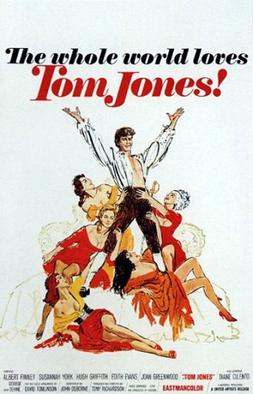
Tom Jones is a 1963 British comedy film, an adaptation of Henry Fielding's classic 1749 novel The History of Tom Jones, a Foundling, starring Albert Finney as the title hero. It was one of the most critically acclaimed and popular comedies of its time, and won four Academy Awards, including Best Picture. The film was produced and directed by Tony Richardson and the screenplay was adapted by playwright John Osborne.
The "angry young men" were a group of mostly working- and middle-class British playwrights and novelists who became prominent in the 1950s. The group's leading figures included John Osborne and Kingsley Amis; other popular figures included John Braine, Alan Sillitoe, and John Wain. The phrase was originally coined by the Royal Court Theatre's press officer in order to promote Osborne's 1956 play Look Back in Anger. It is thought to be derived from the autobiography of Leslie Paul, founder of the Woodcraft Folk, whose Angry Young Man was published in 1951.

John James Osborne was an English playwright, screenwriter, actor, and entrepreneur. Born in London, he briefly worked as a journalist before starting out in theatre as a stage manager and actor. He lived in poverty for several years before his third produced play, Look Back in Anger (1956), brought him national fame.
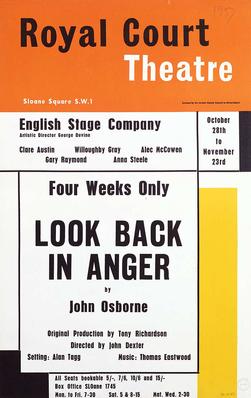
Look Back in Anger (1956) is a realist play written by John Osborne. It focuses on the life and marital struggles of an intelligent and educated but disaffected young man of working-class origin, Jimmy Porter, and his equally competent yet impassive upper-middle-class wife Alison. The supporting characters include Cliff Lewis, an amiable Welsh lodger who attempts to keep the peace; and Helena Charles, Alison's snobbish friend.

Volpone is a comedy play by English playwright Ben Jonson first produced in 1605–1606, drawing on elements of city comedy and beast fable. A merciless satire of greed and lust, it remains Jonson's most-performed play, and it is ranked among the finest Jacobean era comedies.

The Royal Court Theatre, at different times known as the Court Theatre, the New Chelsea Theatre, and the Belgravia Theatre, is a non-commercial West End theatre in Sloane Square, London, England. In 1956 it was acquired by and remains the home of the English Stage Company, which is known for its contributions to contemporary theatre and won the Europe Prize Theatrical Realities in 1999.

Adrienne Corri was a Scottish actress.
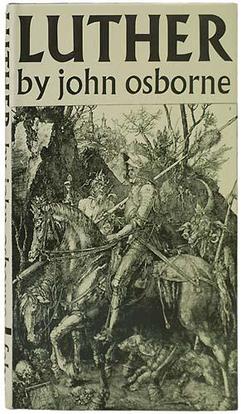
Luther is a 1961 play by John Osborne depicting the life of Martin Luther, one of the foremost instigators of the Protestant Reformation. Albert Finney created the role of Luther, which he performed with the English Stage Company at the Theatre Royal, Nottingham, the Théâtre Sarah Bernhardt, Paris, the Holland Festival, the Royal Court Theatre, London, the Phoenix Theatre, London, and the St. James Theatre, New York.

The Entertainer is a 1960 British kitchen sink drama film directed by Tony Richardson, produced by Harry Saltzman and adapted by John Osborne and Nigel Kneale from Osborne’s stage play of the same name. The film stars Laurence Olivier as Archie Rice, a failing third-rate music-hall stage performer who tries to keep his career going even as the music-hall tradition fades into history and his personal life falls apart. Olivier was nominated for an Oscar for Best Actor in a Leading Role.

Michael Maloney is an English actor.

Sir Kenneth MacMillan was a British ballet dancer and choreographer who was artistic director of the Royal Ballet in London between 1970 and 1977, and its principal choreographer from 1977 until his death. Earlier he had served as director of ballet for the Deutsche Oper in Berlin. He was also associate director of the American Ballet Theatre from 1984 to 1989, and artistic associate of the Houston Ballet from 1989 to 1992.
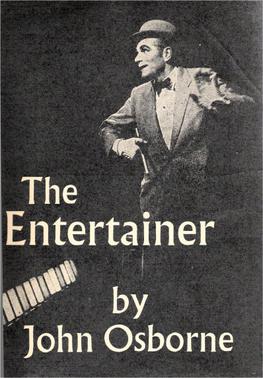
The Entertainer is a three-act play by John Osborne, first produced in 1957. His first play, Look Back in Anger, had attracted mixed notices but a great deal of publicity. Having depicted an "angry young man" in the earlier play, Osborne wrote at Laurence Olivier's request about an angry middle-aged man in The Entertainer. Its main character is Archie Rice, a failing music-hall performer. Years later, Tony Richardson, who directed The Entertainer's premiere season, described Archie as "the embodiment of a national mood ... Archie was the future, the decline, the sourness, the ashes of old glory, where Britain was heading". The first performance was given on 10 April 1957 at the Royal Court Theatre, London. This theatre was well-known for its commitment to new and non-traditional drama, and the inclusion of a West End star such as Olivier in the cast caused much interest.
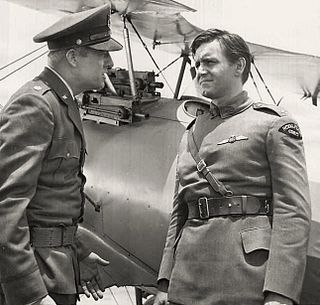
Kenneth William Michael Haigh was an English actor. He first came to public recognition for playing the role of Jimmy Porter in the play Look Back in Anger in 1956 opposite Mary Ure in London's West End theatre. Haigh's performance in the role on stage was critically acclaimed as a prototype dramatic working-class anti-hero in post-Second World War English drama.
Grand Slam Opera is a 1936 American short comedy film starring Buster Keaton and produced by Educational Pictures.
Gregory A. "Greg" Hersov is a British theatre director. Hersov was educated at Bryanston School and Mansfield College, Oxford.

Epitaph for George Dillon is an early John Osborne play, one of two he wrote in collaboration with Anthony Creighton. It was written before Look Back in Anger, the play which made Osborne's career, but opened a year after at Oxford Experimental Theatre in 1957, and was then produced at London's Royal Court theatre, where Look Back in Anger had debuted. It transferred to New York City shortly afterwards and garnered three Tony Award nominations.

The Song of the Earth is a ballet based on Das Lied von der Erde, a symphonic work written by the Austrian composer Gustav Mahler in 1908–1909. It is scored for two voices and orchestra, and has been used for ballets by several well-known choreographers, including Antony Tudor (1908–1987), Kenneth MacMillan (1929–1992), Heinz Spoerli, and John Neumeier.

The Blood of the Bambergs (1962) is a short two-act play by John Osborne, published in his book "Plays for England". It was designed to be shown in a double-bill with another short play, Under Plain Cover. The Blood of the Bambergs is a satirical commentary on royal weddings, in a variation on the story of The Prisoner of Zenda.
Boy Meets Girl is a three-act, seven-scene play, written by Bella and Samuel Spewack, staged and produced by George Abbott. It is a farce with a large cast, fast pacing, two settings and a film sequence. The action centers around two scenarists at the Royal Studios in Hollywood, their volatile producer, the fading western actor they write for, and a pregnant single waitress whose baby they turn into a film star. The play's title comes from a trope common to early film plots: Boy Meets Girl, Boy Loses Girl, Boy Gets Girl. Though not original to the play, the phrase received a boost in popular usage as a result.
